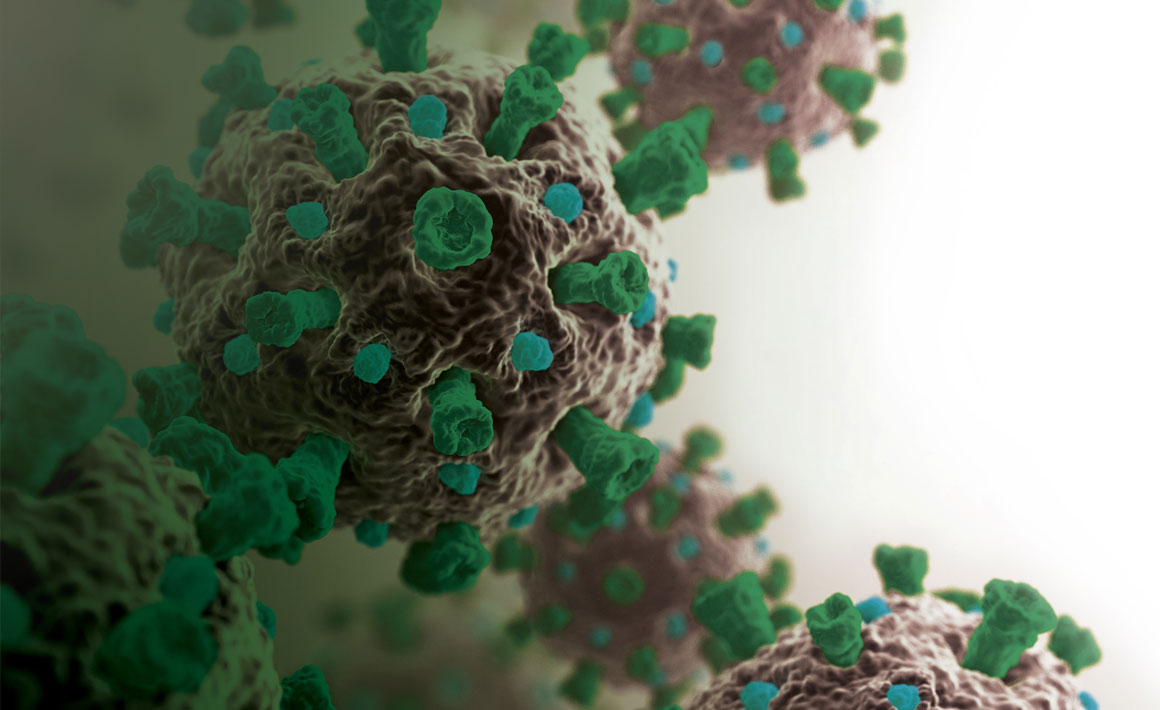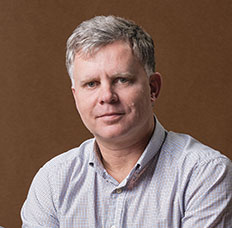
The University of Otago's “exceptional expertise” in infectious diseases has proven invaluable as New Zealand confronted a long-predicted pandemic, but one for which it was ill-prepared.

Professor Philip Hill:
“The country was not ready and the pandemic challenged the part of our health system that had become our weakest.”
New Zealand's response to COVID-19 has been hailed as swift and decisive. The country's relatively small number of early cases and death toll of just 22 have been held as testament to good decision-making and are the envy of much of the rest of the world.
But those at the hub of the desperate months of March, April and May 2020 know just how close New Zealand came to getting it wrong.
As reports of a new coronavirus began to emerge from Wuhan in China, epidemiologists at the University of Otago and across the world feared that this was the pandemic they had been predicting for years.
Governments that had failed to heed scientists' warnings had to scramble to play catch-up after years of neglect of public health systems. Even governments that were better prepared were placed under severe pressure to mount an effective response.
Fortunately, experienced researchers across New Zealand were able to inform public health policy – from early warnings to first responses to a life-saving change of direction and building capacity to contain the epidemic to the point of elimination.
Several experts became almost as familiar on national media as Prime Minister Jacinda Ardern and Director-General of Health Dr Ashley Bloomfield, whose daily press conferences were hailed by many Kiwis as compulsory viewing. The University of Otago alone had dozens of researchers influencing both policymakers and the general public across television, radio, print media and online forums, with many of them featuring internationally as the world tried to work out what New Zealand was doing right.
For Professor Philip Hill, inaugural holder of the McAuley Chair in International Health, co-director of Otago's Centre for International Health and chair of Otago's Infectious Disease Emergency Planning Group, it was a demonstration of the strength of Otago's infectious diseases public health academics.
“We should never give in and stop believing that we can win the fight against this virus.”
“When it comes to infectious diseases, we have specific expertise that other universities just don't have,” he says.
He cites the relevant specialities of just a sample of leading academics at Otago: Professor Michael Baker (public health), Associate Professor Patricia Priest (infectious diseases epidemiology), Dr Ayesha Verrall (infectious diseases and epidemiology) and Professor John Crump. Crump is an infectious diseases and microbiology specialist and epidemiologist, and co-director of the Centre for International Health with Hill, whose own combination of specialty training in infectious diseases medicine and public health is possibly unique in the country.
“Academics choose an area of specialisation and they may congregate where that is best served. People have come together at Otago and created exceptional expertise in one place.”
Public health focuses on the population rather than the individual, assessing national health and health-care needs. The aims are to inform policy and strategy, promote health, prevent and control disease, and organise services.
But despite knowledge and regular advice from Otago and others, New Zealand was not well prepared for COVID-19.
“There had been no new money for public health – funding was not even inflation-adjusted since 2009,” says Hill. “The country was not ready and the pandemic challenged the part of our health system that had become our weakest.
“The only pandemic plan we had, like many other countries, was mainly based around the influenza virus – but the new virus was not an influenza virus.”
Hill was just one of many Otago researchers who saw problems early and tried to contribute to solutions.
“Rather than just listen to what the Chinese were saying, it was important to take note of what they were actually doing. For example, setting out to build a huge hospital in 15 days in Wuhan meant that they were in serious trouble.
“But by late February it became clear that China was actually gaining control over the virus. It was assumed that no free-world country could be so draconian in its response to the problem. But it turned out China was not being as draconian, at least outside of Hubei province, as had been assumed. Their public health approach had been huge, sophisticated, tailored and integrated.”
It also became clear that some other Asian countries were succeeding in controlling even large outbreaks, including those that featured community transmission. Hill, Dr Ayesha Verrall and others realised that those countries had one intervention in common – rapid case contact management.
“The ability to stop and think under pressure is crucial when facing a threat of this magnitude, moving as fast as it was. This includes thinking about what the general public and those who are making decisions need to hear and how to explain it in a way that they can clearly understand.”
Verrall, who did her PhD with Hill's group, had extensive experience in contact tracing from her own research tracking tuberculosis infection. She immediately began lobbying government and the Ministry of Health to scale up testing and contact tracing for COVID-19 cases, and was soon commissioned to advise the government.”
Under most existing influenza pandemic plans, once community transmission has begun, contact tracing is discontinued. With the COVID-19 pandemic, rising global death tolls showed that merely diagnosing and managing cases was proving to be inadequate, disastrous and fatal.
However, countries that had adequate testing for COVID-19 and never stopped tracing the contacts of cases seemed to be containing the virus. The government needed to be persuaded to follow Verrall's exhortations to expand the country's testing workforce and not to stop contact tracing even after community transmission was detected.
Hill and Otago immunologist Associate Professor James Ussher studied the data from China and other affected countries and suggested that the virus that caused COVID-19 had an Achilles heel that contact tracing could exploit.
COVID-19's peak transmissibility was very early after the appearance of symptoms, so onward transmission could not be stopped by just diagnosing and isolating cases. However, unlike with influenza, those who were infected by COVID-19 tended to take five or six days to become highly infectious and develop symptoms, so quarantining them to stop ongoing transmission was a realistic proposition for public health teams.
“We realised that this was an indisputable argument to explain the efficacy of rapid case contact management,” says Hill. “Anyone in the population could understand it. And, as with other aspects of the New Zealand situation, once the government understood the science, they responded well to advice.”
Emeritus Professor Sir David Skegg, former Vice-Chancellor of Otago and an internationally-recognised epidemiologist and public health physician, “entered the fray at just the right time”, according to Hill. Skegg didn't mince words. He warned the government's Epidemic Response Committee that failing to improve New Zealand's contact tracing system would be like playing Russian roulette with the health of the population.
Scientific advice changed rapidly as more was learned about the virus. Initial lockdown aimed at mitigation – trying to slow down the spread of the virus to avoid overloading the unprepared health system with patients.
But modelling by Professor Michael Baker and Professor Nick Wilson, director of the Burden of Disease Epidemiology, Equity and Cost-Effectiveness Programme, soon showed that lockdown provided a real chance to eliminate the virus, which would be much better than simple mitigation.
In terms of virus transmission, “elimination means, in simple terms, elimination as a public health threat”, says Hill. “Eradication is a much stronger term and refers to the non-existence of the pathogen in the population globally.”
Skegg's further submissions to the Epidemic Response Committee supported the bid to eliminate the virus in New Zealand. He warned that in order to avoid a prolonged lockdown, which would harm the economy, the government also had to begin a massive programme of testing, not just of suspected cases, but throughout the general population to check there was no unknown or unexplained community transmission. Urgency was key. “There is no such thing as over-testing and every day counts.”
Messages from Otago advisers were prominent, clear and all across national and international media. “We already had some outstanding scientific communicators,” says Hill. “People like Ayesha Verrall, Michael Baker and David Skegg all came to the fore at crucial moments.
“The ability to stop and think under pressure is crucial when facing a threat of this magnitude, moving as fast as it was. This includes thinking about what the general public and those who are making decisions need to hear and how to explain it in a way that they can clearly understand.
“Otago experts had a fundamental influence on all aspects of the government's decision-making and continue to do so.”
As the numbers of new cases began to fall, the pressure moved from containing the virus to focus on finding a protective vaccine, therapeutics and further epidemiology.
Not only does Otago have outstanding strength in infectious diseases public health, but also in the basic sciences of infectious diseases. Associate Professor James Ussher and Professor Miguel Quiñones-Mateu, who holds the Webster family Chair of Viral Pathogenesis, Microbiology and Immunology, have helped establish diagnostic testing in Dunedin at a level that is the envy of the rest of the country, says Hill.
They, and others, also played a crucial role in lobbying the government for funding towards New Zealand working on vaccine development.
“We also now have the capability to develop new vaccines for this and future pandemics right here in New Zealand at Otago. We have the people who are trained to produce vaccines and we know what we are doing with respect to their design, construction and evaluation.”
Hill rates New Zealand's reaction to the crisis as 7 out of 10. “We should have been able to avoid a lockdown, but our response wasn't ready and what we did at first wasn't good enough. But the lockdown itself was successful, of course, so we have finished this phase well.”
It also taught New Zealanders the importance of basic hygiene, one of several lessons Hill would like to see remembered. “Not passing your cold or 'flu to others is a good habit.
“Another lesson that the world would do well to heed is getting rid of preconceptions and biases. Some people were suspicious of data coming from Asia, even when the data were being backed up by evidence from what was happening in other countries.
“Some people questioned advice from an Ethiopian head of the World Health Organization and some were uncertain of the advice of a young female academic [Verrall]. We have to be prepared to accept what goes against our preconceptions when the evidence indicates there is good reason to, and to confront our unconscious biases when they are exposed.”
Hill also stresses the importance of perseverance. “When we learned that people who were not yet showing symptoms of the virus could transmit it, some people felt we might just as well give up and let it take its course, but you should never give up.
“There was no way that the Asian countries and New Zealand could have controlled the virus as they did if a large number of asymptomatic transmissions had been driving their epidemics. We should never give in and stop believing that we can win the fight against this virus.”
